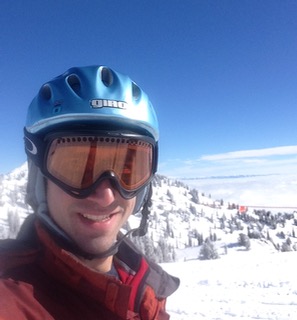
My interests in snow are primarily related to measuring falling snow using multi-frequency radar and passive microwave radiometers from the vantage point of aircraft and satellites in space. Transforming these measurements to accurate estimates of the snowfall rate is a challenging scientific problem, but recent advances in modeling the electromagnetic scattering properties of realistic snowflakes have led to improvements in our ability to remotely measure snowfall with these instruments. Coupling this increase in scientific understanding with data from satellites such as GPM and CloudSat will lead to better knowledge of the global amount and distribution of falling snow, which is important for societal applications such as water resource management and transportation hazards. It will also enable us to map the type of snowflakes in clouds, which will improve how our knowledge of the processes by which they form and grow and how these are represented in weather and climate models. Finally, better measurements of falling snow will lead to better understanding the relationship between snowfall and snow cover over land and sea ice, and how this relationship may be affected by the rapidly changing Arctic climate.
Growing up in northern Virginia, significant snow wasn’t common every year but I remember the tremendous impact large, disruptive winter storms such as the 1993 Superstorm, 1994 ice storms, and Blizzard of 1996, as well as poorly-forecast events such as the March 1999 and January 2000 snowstorms had to completely paralyze the area. A desire to understand what made these events so impactful and/or difficult to forecast led me to pursue a degree in meteorology. Going to graduate school in Colorado, where snow is not quite as rare, rekindled my interest in skiing and snowshoeing, as well as bringing an acute understanding of the importance of snowfall to the water supply in the western US. These varied experiences show that as a society our relationship with snow is a complex one – a hindrance in some aspects but a vital resource in others, but always impactful.
Selected publications/presentations:
Munchak, S. J., and I. Adams, 2017: Optimal estimation retrievals of precipitation with active and passive measurements (using ARTS as a forward model). 3rd Open ARTS Community Workshop, Kristineberg, 6-8 September 2017.
Munchak, S. J., I. Adams, and B. Johnson, 2016: An Investigation of Precipitation-Induced Polarization at 166 GHz Observed by GMI. 8th IPWG and 5th IWSSM Joint Workshop, Bologna, 3-7 October, 2016
Munchak, S., and G. Skofronick-Jackson. 2013. "Evaluation of precipitation detection over various surfaces from passive microwave imagers and sounders." Atmospheric Research, 131: 81-94 [10.1016/j.atmosres.2012.10.011]
Skofronick-Jackson, G., B. Johnson, and S. Munchak. 2013. "Detection Thresholds of Falling Snow From Satellite-Borne Active and Passive Sensors." IEEE Trans. Geosci. Remote Sensing, 51 (7): 4177-4189 [10.1109/TGRS.2012.2227763]
Grecu, M., W.S. Olson, S.J. Munchak, S. Ringerud, L. Liao, Z. Haddad, B.L. Kelley, and S.F. McLaughlin, 2016: The GPM Combined Algorithm. J. Atmos. Oceanic Technol.,33, 2225–2245, https://doi.org/10.1175/JTECH-D-16-0019.1

